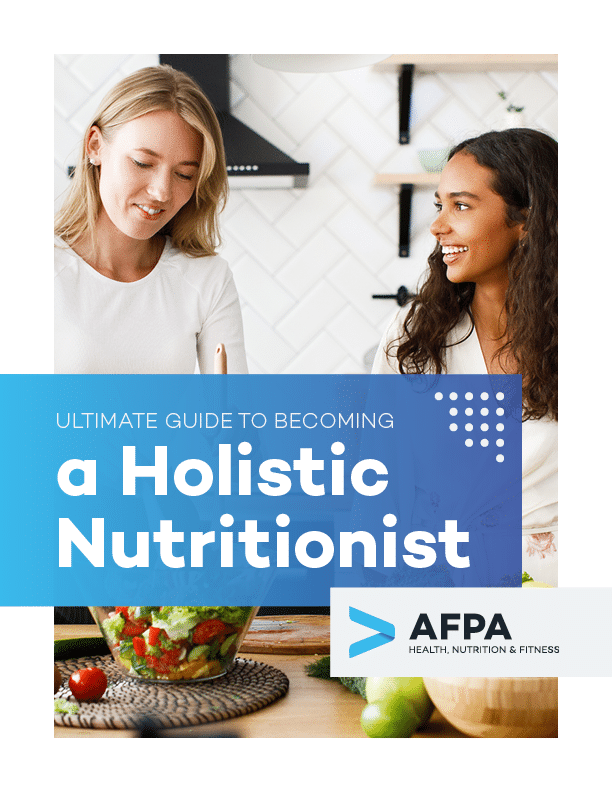Conducting a client nutrition assessment can be straightforward provided you have a solid grasp on your client’s nutritional needs, fitness goals, lifestyle habits, and mindset toward food and eating choices.
Here are five key questions that’ll help you conduct an in-depth evaluation of your client’s food and nutrient intake, lifestyle, and medical history—so you get everything you need to help them achieve their goals.
What Do You Want to Achieve from Working with Me?
Does your client want to lose weight? Add muscle? Or are they simply looking to “feel better” (i.e., have more energy and vitality)?
You must have a firm grasp of what your client wants from working with you before coming up with a nutritional plan. Each “goal” requires a different coaching focus and strategy.
For example:
- Weight loss: When working with a client who wishes to lose weight, you’ll first have to analyze their unique lifestyle habits and experiences—this gives you insights into the specific areas worth “optimizing” (e.g., if they’re prone to overeat in social gatherings, you could guide them through steps that’d help minimize their food intake during such settings).
- Athletic performance enhancement: For a client looking to improve their athletic performance, your focus will be less on total calorie intake (it’s still essential but not a priority) and more on optimizing their meal timing and macronutrient split (e.g., maybe your client performs best on 50% carbs, 30% protein, and 20% fats). Another important area you’d likely cover is supplementation; more specifically, which supplements you’d recommend your client take—and why.
Clients may also fail to have a clear understanding of what they wish to achieve. In cases like this, don’t be afraid to dig deeper to identify your clients’ priorities. It’s also helpful to work through the process with your clients so both parties have a clear idea of how to measure progress—and what the goal looks like.
Let’s say a client tells you they want to “get stronger.”
Suitable follow-up questions to that would be: “Is there a particular exercise (e.g., the deadlift), sport (e.g., rugby), or event (e.g., the NYC Half Marathon) you have in mind? Or just an overall feeling? How will you know when you are stronger?”
Do You Have Any Dietary Restrictions or Food Allergies?
A nutritional plan for a client on a plant-based diet will look very different from another who has no dietary restrictions.
For the former, you’ll have to pay extra attention to designing meal plans that avoid some of the common nutrition shorts that can be associated with vegan and vegetarian diets (e.g., vitamin B12, omega-3 fatty acids, zinc, and iron).
As for the latter? You’d likely be able to meet your client’s micronutrient needs so long as you’re programming in a varied mix of:
- Carbohydrates (centered around whole grains as much as possible)
- High-quality fat (e.g., nuts, seeds, avocados, and fatty fish)
- Lean protein (both plant- and animal-based, like legumes, soy, tuna, and eggs)
- Fruits and vegetables
Beyond a client’s dietary restriction, you must also ascertain if they have any food allergies and food-related autoimmune conditions (e.g., celiac disease).
Both food allergies and autoimmune conditions can cause potentially life-threatening reactions—so, for obvious reasons, you should avoid implementing meal plans that involve a problem food.
The eight most common food allergies to pay attention to include cow’s milk, eggs, tree nuts (e.g., Brazil nuts, almonds, cashews, and walnuts), peanuts, shellfish, wheat, soy, and fish.
It’s also worth asking about food intolerances.
While they don’t cause severe or deadly immune system reactions, food intolerances can still cause significant distress to a client; in general, excluding such “trigger foods” from a client’s meal plan is always a good idea.

Get Your Free Guide to Becoming a Holistic Nutritionist
Learn about the important role of holistic nutritionists, what it takes to be successful as one, and how to build a lucrative, impactful career in nutrition.
Have You Ever Changed Your Eating Habits?
This question uncovers valuable insights into your client’s previous nutrition history—along with crucial information on current eating habits and lifestyle choices.
More specifically, asking about past nutritional behaviors allows you to understand better what knowledge level they may be at. This, in turn, informs you of how in-depth you’d need to go when explaining the underlying rationale of their nutritional plan.
A client who’s tweaked their macronutrient split, for example, is likely to already have a firm grasp on nutritional concepts like “calorie in, calorie out” and “calorie density.”
On the contrary, a client who’s never changed anything about their diet before would need more hand-holding. You’d need to go through basic nutrition principles with this client before even implementing a plan.
Another benefit to asking about your client’s nutritional history is that you’ll gain information about what worked for them in the past and what didn’t.
This gives you vital clues about how various protocols may affect them—providing you with a good starting point.
What Does Your Schedule Look Like?
The best nutritional plan is one that your client will stick to.
Imagine what would happen if you were to develop a nutritional plan that requires 10 hours of meal prep weekly for a client who already has too much on their plate.
That’s right: They’d most likely revert to their old eating habits—and give up on the newly developed plan (no matter how well it could potentially help them achieve their nutritional goals).
Thus, highlighting the importance of creating a plan that accounts for your client’s schedule.
That said, no matter your client’s current “bandwidth,” you should try your best to create a nutritional plan that’ll allow them to acclimate to their new diet and lifestyle.
Instead of getting them to eliminate all fast foods from their diet, for example, have them cut down on the frequency instead (e.g., twice, instead of five times a week). This boosts your client’s adherence, helping deliver sustainable results.
How’s Your Relationship with Food?
Does your client struggle with an unhealthy relationship with food?
While you’re not qualified to provide therapy in eating disorders as a fitness and wellness professional, what you can do on your end is:
- Encourage your client to seek professional help.
- Avoid having your client track their nutritional intake—and, instead, encourage an approach closer to “intuitive eating.”
But, of course, an individual’s relationship with food can exist on a spectrum.
So, while a client’s eating behaviors may not be diagnosed as a psychological issue, you should still proactively help them nurture a healthy relationship with food.
An excellent way to do this is by having your client stop labeling foods as either “good” or “bad” (e.g., fries are “bad,” salads are “good”).
Research shows that individuals who view foods in this “black and white” way are worse at regulating their intake of “problematic” foods and prone to enter an endless cycle of guilt after overeating.
Instead, help your clients understand that while there are foods that are indeed less nutritious and more calorie-dense, there’s no reason to eliminate them entirely.
The more practical and sustainable approach is to regulate the consumption of these foods so they’re still able to enjoy them without overindulging.
Be Mindful of Staying within Your Scope of Practice
While these questions help you understand your client’s needs, it’s important to be upfront about your limitations when prescribing nutrition plans (e.g., diagnosis and management of chronic medical issues).
No matter how “nutritionally experienced” your clients may seem, recommending them to seek clearance and advice from medical professionals should always be the first step. Remember, your client’s safety and wellbeing are your priorities.
References
- https://www.ncbi.nlm.nih.gov/pmc/articles/PMC7073751/
- https://www.ncbi.nlm.nih.gov/pmc/articles/PMC4414527/
- https://www.ncbi.nlm.nih.gov/pmc/articles/PMC6682924/
- https://pubmed.ncbi.nlm.nih.gov/22750852/




